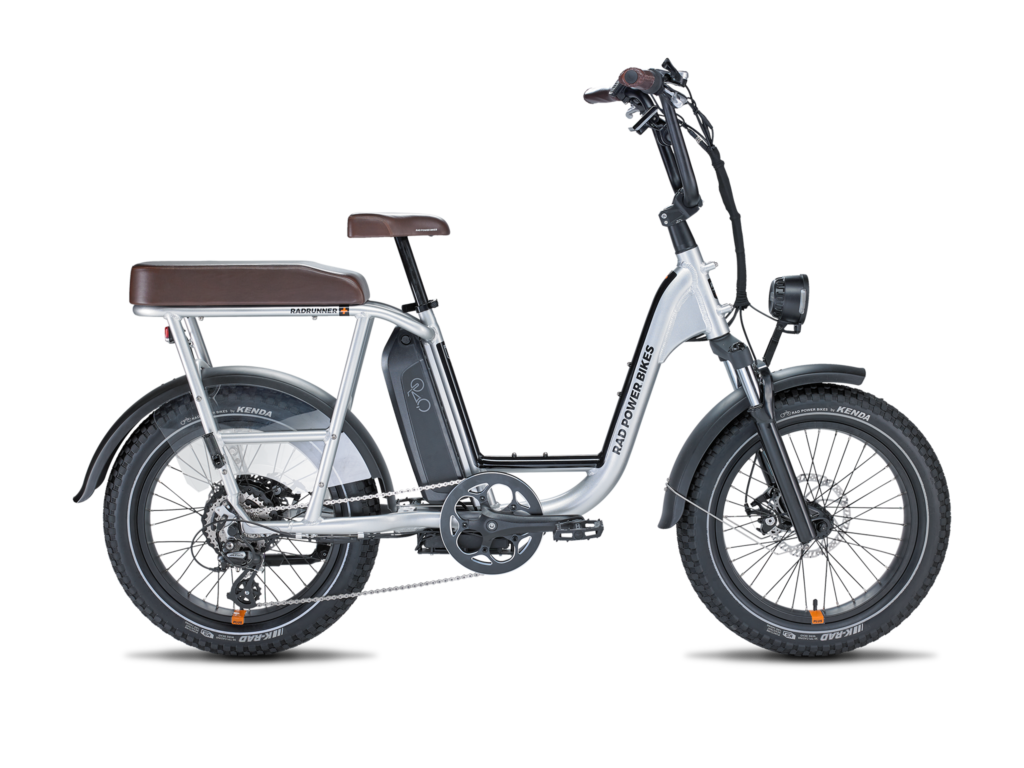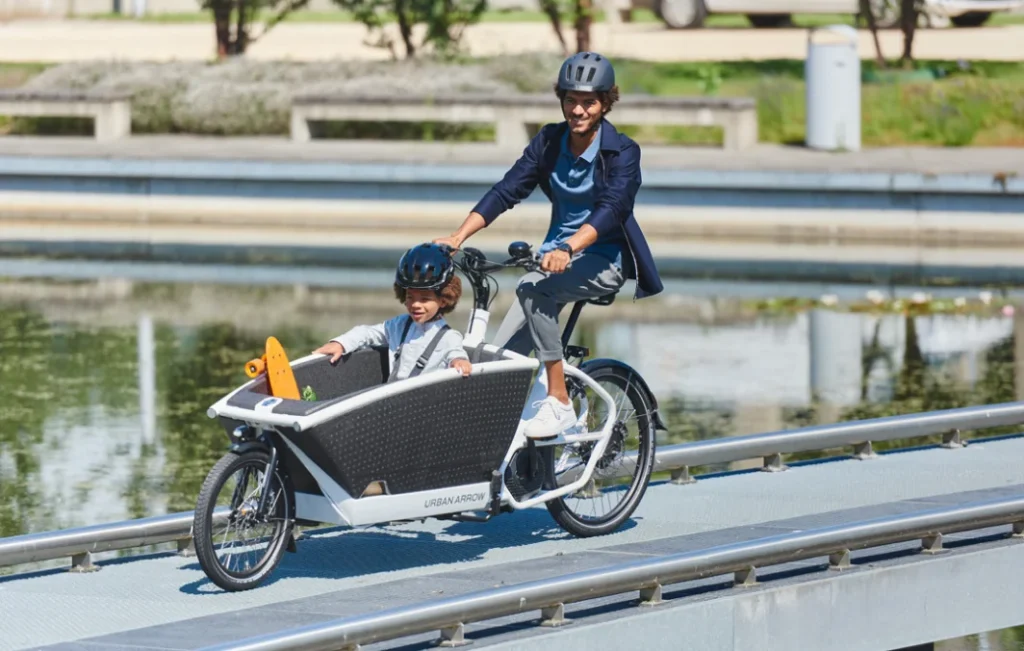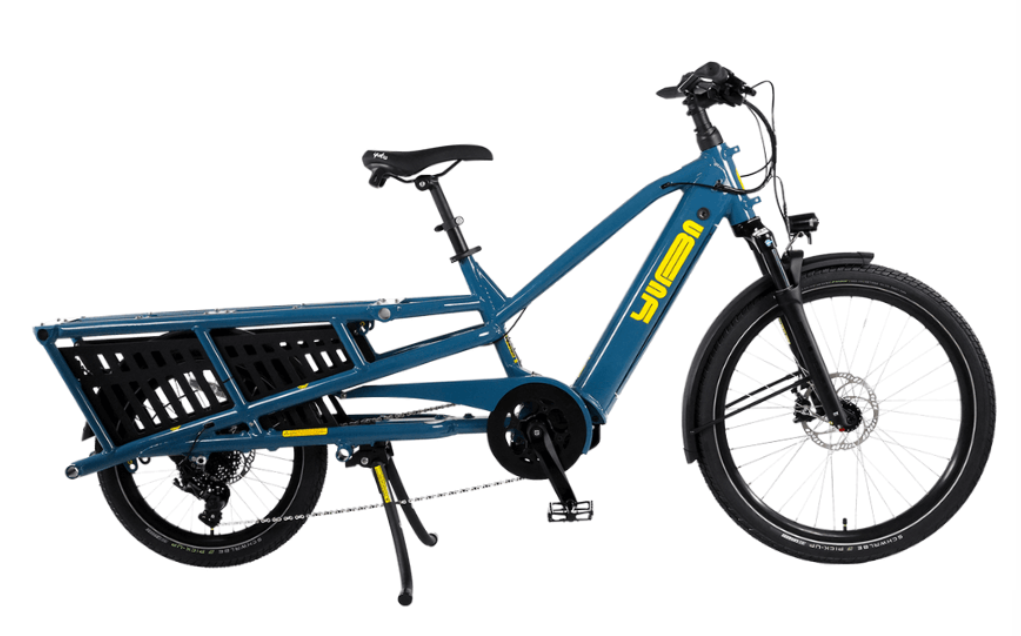Table of Contents
As a long-time electric bike enthusiast and former food delivery rider, I’ve seen firsthand how the right electric bike can transform a courier’s workday. The best electric bike for food delivery combines efficiency, reliability, and adaptability to meet the unique demands of urban food couriers.
Whether you’re a seasoned rider looking to upgrade or a delivery service aiming to improve your fleet, this guide will help you confidently navigate the best electric bike for food delivery landscape.
Understanding the Advantage of the Best Electric Bike for Food Delivery

Electric bikes offer a unique combination of speed, maneuverability, and cost-effectiveness that traditional vehicles simply can’t match in urban environments. Here’s why the best electric bike for food delivery is changing food delivery:
The Speed Factor
In congested city centers, the best electric bike for food delivery easily weave through traffic, often outpacing cars during peak hours. This translates to faster delivery times and more satisfied customers.
A study conducted in New York City found that couriers using the best electric bike for food delivery completed deliveries up to 30% faster than their counterparts using cars or traditional bicycles.
Cost-Efficiency
The best electric bike for food delivery offers substantial financial benefits for delivery services and independent riders alike. Their lower initial investment, minimal fuel costs, and reduced maintenance expenses make them attractive.
Over time, these savings can significantly boost profit margins.
Environmental Impact
As consumers become increasingly eco-friendly and eco-conscious, the best electric bike for food delivery green credentials are a significant selling point. By choosing electric over gas-powered vehicles, delivery services can reduce their carbon footprint and appeal to environmentally aware customers.
Key Features to Look for in a Food Delivery Electric Bike
Certain features are essential when selecting the best electric bike for food delivery. Let’s break down the most critical aspects:
Battery Range and Power
The heart of any electric bike for food delivery is its battery. You’ll want a range of at least 40-60 miles for food delivery on a single charge.
Look for bikes with high-capacity lithium-ion batteries, ideally 48V or higher.
Some top models even offer dual-battery systems for extended range.
I’ve found that bikes with removable batteries are incredibly convenient for easy charging or hot-swapping during long shifts. This feature can be a real game-changer when maximizing your delivery time.
Motor Performance
A powerful motor in the best electric bike for food delivery is crucial for handling heavy loads and tackling hills.. Opt for motors rated at 500W or above, with peak outputs of 750W to 1000W.
Hub motors are standard and reliable, but mid-drive motors offer better weight distribution and climbing ability.
In my experience, mid-drive motors provide a more natural riding feel and excel on hilly terrain, which can be a significant advantage in cities with varied topography.
Cargo Capacity
Your choice of the best electric bike for food delivery should comfortably carry both you and your deliveries.. Look for models with a total payload capacity of at least 300 pounds.
Integrated racks, baskets, or cargo areas are essential for securing and effectively transporting food items.
I’ve found that having a versatile cargo system can make a huge difference in your ability to handle different types of orders. Some bikes offer modular systems that allow you to customize your setup based on your specific needs.
Durability and Reliability
Food delivery puts significant wear and tear on a bike. Choose models with robust frames (aluminum or steel), puncture-resistant tires, and high-quality components that can withstand daily use in various weather conditions.
From personal experience, I can’t stress enough how important it is to invest in a bike that can handle the rigors of daily delivery work. Cheap components might save you money upfront but will cost you in the long run through increased downtime and repairs.
Comfort and Ergonomics
Long hours in the saddle demand a comfortable ride. Your best electric bike for food delivery should help to reduce fatigue and improve handling. Prioritize electric bikes with adjustable handlebars, ergonomic grips, and suspension systems (at least a front fork and full suspension, if possible).
After countless hours on the road, I’ve learned that comfort isn’t just a luxury—it’s necessary to maintain productivity and prevent burnout. A comfortable bike lets you focus on your deliveries rather than on your aching back or wrists.
Top Electric Bike Models for Food Delivery
Now that we know what to look for, let’s explore some of the best electric bike for food delivery models currently vailable:
1. RadPower RadRunner Plus

The RadRunner Plus is a versatile workhorse for food delivery. Its powerful 750W motor, range of up to 45+ miles, and payload capacity of 300 pounds make it built to handle the demands of urban delivery.
The step-through frame and customizable accessory options make it adaptable to various rider preferences and delivery needs. I particularly appreciate the integrated rear rack and the option to add a front basket, providing space for even large orders.
2. Tern GSD S10

For those seeking the most cargo capacity in a compact package, the Tern GSD S10 is hard to beat. Its unique design allows it to carry up to 440 pounds while maintaining the footprint of a standard bicycle.
With a range of up to 68 miles and the option for a dual-battery system, it’s perfect for long shifts or high-volume delivery days. The low center of gravity makes it incredibly stable, even when fully loaded – a feature I found invaluable when navigating busy streets.
3. Urban Arrow Family

The Urban Arrow Family is a serious contender for food delivery. IItssizeable front cargo area can be customized with insulated boxes, making it ideal for temperature-sensitive deliveries.
The Bosch Performance Line CX motor provides plenty of power, while the weather protection options confirm year-round usability. I’ve found that the enclosed cargo area protects food from the elements and gives a professional appearance that customers appreciate.
4. Riese & – Müller Packster 70

The Packster 70 is a premium option that combines performance with comfort. The entire suspension system smooths out rough roads, reducing fatigue on long shifts.
The modular cargo system allows easy customization, and the dual-battery option provides an impressive range of up to 90 miles. While it has a higher price tag, the build quality and reliability make it a worthwhile investment for serious delivery riders or businesses looking to build a high-end fleet.
5. Yuba Spicy Curry V3

With its low center of gravity and powerful Bosch Cargo Line motor, the Yuba Spicy Curry V3 offers exceptional stability and performance. The extended rear rack can accommodate large delivery boxes or custom cargo solutions, making it versatile for various delivery scenarios.
I’ve been impressed by how well this bike handles heavy loads, even on steep inclines. The adjustable frame also suits riders of different heights, which is excellent for businesses with many couriers.
Implementing E-Bikes in Your Delivery Service
Transitioning to the best electric bike for food delivery requires more than purchasing the proper bikes. Here’s a step-by-step guide to successfully integrating e-bikes into your delivery operations:
1. Assess your delivery area and typical order volumes to decide the most suitable electric bike models and quantities. Consider factors like terrain, average delivery distance, and typical payload.
2. Develop a maintenance plan, including regular check-ups and a system for quick repairs to minimize downtime. Establish relationships with local bike shops or learn how to do essential repairs on your own.
3. Train your riders on electric bike operation, safety protocols, and effective delivery techniques specific to electric bikes. This should include proper battery management, cargo loading, and navigating traffic safely.
3. Implement a charging infrastructure at a central location or through partnerships with local businesses to provide distributed charging points. Consider investing in fast chargers to reduce downtime between shifts.
4. Optimize your delivery software and apps to account for electric bike capabilities, including route planning that takes advantage of bike lanes and shortcuts. Many delivery platforms now offer electric bike-specific features that can improve efficiency.
5. Create a safety gear policy, providing your riders with helmets, reflective clothing, and other necessary equipment. This protects your staff and demonstrates professionalism to customers.
6. Monitor performance metrics closely, tracking delivery times, rider satisfaction, and maintenance costs to refine your electric bike strategy continually. Use this data to make informed decisions about fleet expansion or upgrades.
Overcoming Common Challenges
While electric bikes offer many advantages, they also come with their own set of challenges. Here’s how to address some of the most common issues even the best electric bike for food delivery may have:
Battery Management
To prevent riders from running out of power mid-shift, apply a battery monitoring system and establish clear protocols for recharging or swapping batteries. Consider investing in fast-charging stations or partnering with local businesses to create a charging point network.
I’ve found that educating riders on effective battery use – such as using pedal assist judiciously on flat terrain – can significantly extend the range and reduce the need for mid-shift charging. Which means more fun and efficiency with you best electric bike for food delivery.
Weather Considerations
Electric bikes are exposed to the elements, affecting the rider and the vehicle. Riders should be provided with suitable gear for various weather conditions, and weatherproofing modifications, such as fenders and chain guards, should be considered for the best electric bike for food delivery.
In my experience, investing in quality rain gear and winterizing the bike electric bike for food delivery for cold weather can extend your operating season and give you an edge over competitors who might scale back during inclement weather.
Security Concerns
The best electric bike for food delivery is a valuable asset that can be targeted for theft. Invest in high-quality locks and GPS tracking systems for your fleet—train riders on best practices for securing bikes during pickups and deliveries.
I recommend using many locking methods, such as a U-lock with a cable lock and permanently securing the bike to a fixed object, even for quick stops.
Regulatory Compliance
Stay informed about local electric bike regulations, which can vary significantly between jurisdictions. Ensure your best electric bike for food delivery and operational practices follow all relevant laws, including speed limits and equipment requirements.
Building relationships with local transportation officials can help you stay ahead of any regulatory changes that might affect your operations.
Adapting to Different Delivery Scenarios
The versatility of the best electric bike for food delivery allows it to be adapted for various food delivery contexts:
Urban Core Deliveries
In dense city centers, prioritize maneuverability and compact design. The best electric bike for food delivery with smaller wheels and tight-turning radii excel in navigating crowded streets and narrow alleys.
I’ve found that the best electric bike for food delivery with integrated lights and loud horns are handy in busy urban environments. They help you stay visible and talk with other road users.
Suburban Sprawl
Focus on range and comfort for deliveries in more spread-out areas. Opt for the best electric bikes for food delivery with larger battery capacities and consider models with more relaxed geometries for longer rides.
Adding ergonomic accessories like bar ends or a suspension seatpost can improve rider comfort over longer distances on your best electric bike for food delivery.
Mixed Terrain
If your delivery area includes hills or varied surfaces, choose your best electric bike bike for food delivery with powerful motors and robust tires. Full-suspension systems can provide added comfort and control in these conditions.
I’ve found that the best bike for food delivery with adjustable power modes are handy in mixed terrain, allowing riders to conserve battery on flats and boost power for hills.
High-Volume Operations
For businesses handling large order volumes, consider your best electric bike for food delivery or models that can accommodate many insulated containers. These allow riders to carry more orders per trip, increasing efficiency.
Implementing a hub-and-spoke model, where riders pick up many orders from a central location, can maximize the benefits of the best electric bike for food delivery.
From Basics to Mastery: Evolving Your E-Bike Delivery Strategy
As you become more familiar with electric bike deliveries, you’ll uncover opportunities to refine and improve your operations: The best electric bike for food delivery plays a critical role in ensuring efficiency and reliability throughout your strategy.
1. Analyze delivery data to identify patterns and improve routes for electric bike efficiency. Look for opportunities to batch orders or create more effective delivery zones.
2. Experiment with different cargo configurations to balance weight distribution and maximize carrying capacity. Custom-designed cargo boxes or bags can significantly improve your ability to handle diverse order types with the best electric bike for food delivery.
3. Develop rider training programs focusing on electric bike specific skills, such as energy management and safe handling at higher speeds. Regular skill-building sessions can improve efficiency when using the best electric bike for food delivery and reduce accidents.
4. Explore partnerships with local businesses for charging stations, potentially creating a network that benefits the broader electric bike community. This can also lead to cross-promotional opportunities and increased visibility for your service.
5. Stay informed about emerging e-bike technologies, such as innovative locking systems or AI-powered route optimization. Incorporating these advancements into your fleet ensures that you are always using the best electric bike for food delivery solutions available.
Practical Exercises for Electric Bike Delivery Mastery

To help you and your team become proficient with electric bike deliveries, try these exercises:
Range Test
Conduct a series of test runs to accurately decide the real-world range of your electric bikes under various conditions (weather, payload, terrain). This will help you set realistic expectations for your riders and improve route planning.
Efficiency Challenge
Organize a friendly competition among riders to see who can finish the most deliveries on a single charge, encouraging energy-efficient riding techniques. This can be a fun way to identify best practices that can be shared across your team.
Maintenance Workshop
Hold regular sessions where riders learn essential e-bike maintenance, such as tire changes, brake adjustments, and battery care. This empowers your team to handle minor issues on the road, reducing downtime and maintenance costs.
Route Optimization Game
Create a simulated delivery scenario and challenge riders to find the most effective routes using electric bike capabilities. This can help develop critical thinking skills and familiarity with your delivery area.
Weather Preparedness Drill
Conduct training in various weather conditions to confirm riders are comfortable and capable in all situations. This might include practicing safe riding techniques on wet roads or testing the effectiveness of different cold-weather gear.
Key Takeaways
- The best electric bike for food delvery offers significant advantages, including speed, cost-efficiency, and environmental benefits.
- Essential features of electric bikes for food delivery include a long battery range, powerful motors, ample cargo capacity, and durable construction.
- Top electric bike models like the RadPower RadRunner Plus and Tern GSD S10 offer excellent performance for food delivery applications.
- Successful implementation of electric bikes requires careful planning, including maintenance strategies and rider training.
- Adapting electric bikes to different delivery scenarios and continuously refining your approach is key to maximizing their potential.
People Also Asked
What is the best electric bike for food delivery?
The best electric bike for food delivery depends on your needs, but popular options include the RadPower RadRunner Plus, Tern GSD S10, and Urban Arrow Family. These models offer a good balance of range, cargo capacity, and reliability.
How much does an electric bike cost for food delivery?
Electric bikes for food delivery typically cost between $1,500 and $5,000. Higher-end models with larger batteries and more powerful motors tend to be at the upper end of this range.
Can I use a regular electric bike for food delivery?
While a regular electric bike can be used for food delivery, purpose-built cargo electric bikes or those with integrated racks and baskets are often more suitable because of their increased carrying capacity and stability.
How far can an electric bike go on a single charge for deliveries?
Most electric bikes suitable for food delivery can travel 40-60 miles on a single charge, depending on factors like rider weight, terrain, and cargo load. Some high-end models with dual batteries can achieve ranges of 80 miles or more.
Are electric bikes faster than cars for urban food delivery?
In congested urban areas, electric bikes are often faster than cars for food delivery, especially during peak traffic hours. Electric bikes are eco-friendly and can navigate through traffic and bike lanes, potentially reducing delivery times.
What maintenance does an e-bike need for regular food delivery use?
Regular maintenance for a delivery electric bike includes checking tire pressure, lubricating the chain, inspecting brakes, and keeping the battery charged. More comprehensive servicing, such as motor and battery checks, should be done every few months or as the manufacturer recommends.
How do I keep food warm during electric bike deliveries?
Use insulated delivery bags or boxes to keep food warm during electric bike deliveries. Some electric bikes designed for food delivery come with integrated insulated cargo areas.
Electric heating elements can also be added for extra temperature control.
Are there special insurance requirements for using electric bikes for food delivery?
Insurance requirements for electric bike food delivery vary by location and company. Some delivery services provide insurance coverage, while independent contractors may need to secure liability and accident insurance.
Can electric bikes handle hills with a whole load of deliveries?
Many electric bikes designed for delivery can handle hills with a full load, especially those with powerful motors (500W or more) and many gears. Mid-drive motors typically perform better on steep inclines compared to hub motors.
What safety gear should food delivery electric bike riders use?
Essential safety gear for food delivery e-bike riders includes a well-fitting helmet, reflective clothing or vest, front and rear lights, and gloves. In colder climates, suitable weather gear is also crucial for safe riding.